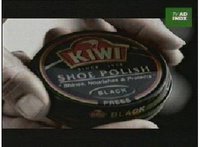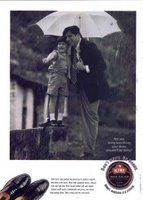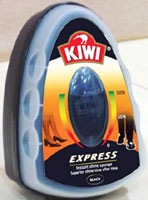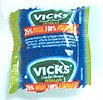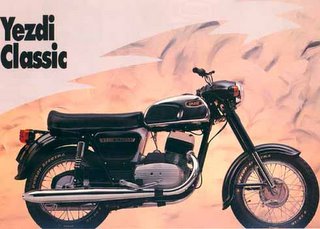Brand : Rasna 
Company: Pioma Industries
Agency: Mudra
Rasna is the market leader in the Rs 250 crore Indian Soft drinks concentrate industry. The SDC industry is miniscule compared to the 5000 crore carbonated soft drink industry ( CSD). The powdered softdrink concentrate industry is worth around 90 crore.

Company: Pioma Industries
Agency: Mudra
Rasna is the market leader in the Rs 250 crore Indian Soft drinks concentrate industry. The SDC industry is miniscule compared to the 5000 crore carbonated soft drink industry ( CSD). The powdered softdrink concentrate industry is worth around 90 crore.
Rasna pioneered this category and virtually owns this market with a market share of 93%.
Rasna was launched in 1982 by Pioma Industries Ltd. Rasna positioned its product on the economy platform. The company aims to capture the customer's " every moments of thirst " using Rasna.
Rasna tried to concentrate on three major attributes for establishing itself in the market
1. Economy per glass
2. Taste
3. Children's affinity towards the product.
Rasna always wanted itself to be perceived as a value for money product. The " price advantage " was pro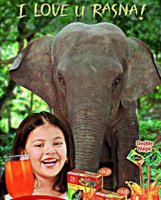 moted heavily and customers were given the details of how each glass of rasna will cost compared to other softdrinks. Rasna began with 9 flavours in 1982. The 10th flavour was added in 1987. Rasna was using children in advertising the brand. Like the Johnson's baby, Rasna girl was very popular among the public. Rasna have used the catchy baseline " I love u Rasna " for decades. Even now people remember Rasna Baseline.
moted heavily and customers were given the details of how each glass of rasna will cost compared to other softdrinks. Rasna began with 9 flavours in 1982. The 10th flavour was added in 1987. Rasna was using children in advertising the brand. Like the Johnson's baby, Rasna girl was very popular among the public. Rasna have used the catchy baseline " I love u Rasna " for decades. Even now people remember Rasna Baseline.
 moted heavily and customers were given the details of how each glass of rasna will cost compared to other softdrinks. Rasna began with 9 flavours in 1982. The 10th flavour was added in 1987. Rasna was using children in advertising the brand. Like the Johnson's baby, Rasna girl was very popular among the public. Rasna have used the catchy baseline " I love u Rasna " for decades. Even now people remember Rasna Baseline.
moted heavily and customers were given the details of how each glass of rasna will cost compared to other softdrinks. Rasna began with 9 flavours in 1982. The 10th flavour was added in 1987. Rasna was using children in advertising the brand. Like the Johnson's baby, Rasna girl was very popular among the public. Rasna have used the catchy baseline " I love u Rasna " for decades. Even now people remember Rasna Baseline.Rasna in 2002, decided on a make over. The company no longer wanted to be a kid's drink. It dawned a new look with new logo and a new baseline " Relish a gain" highlighting the economy of using Rasna. Rasna also tried lot of new products and variants. Realising that the market has shifted to "health and natural " proposition, Rasna launched a new product "Juc fit" which is a fruit based health drink. The new Leaf logo also signifies this shift. The logo signifies value for money and health( the company claims).
Rasna also entered the 1000 crore milk foods category with its Shake Up brand which has not been able to make a dent in to the highly competitive market dominated by the likes of Horlicks and Complan.
Rasna also tried to take the competition for Colas by launching "Rasna Cola Cola" and has roped in Hrith ik Roshan to endorse the brand.
ik Roshan to endorse the brand.
 ik Roshan to endorse the brand.
ik Roshan to endorse the brand. Now Rasna have in the market a subbrands Juc Up ,Rasna International and Utsav in the Powdered SDC category. In 2005 Rasna has launched a range of traditional refreshers like Nimbu pani and Jaljira under the subbrand " Ghar Ka ".
Rasna recently has been struggling to find its soul. All the way it was promoting itself on economy platform which has become redundant because of the competitive pricing from Carbonated softdrinks. It has also changed the famous " I love you Rasna " campaign to " Relish A Gain " baseline which is little confusing for the customers. Customers still remember the Rasna Girl and "I love U " baseline . I am confused why the company changed such a popular baseline?
Rasna is also trying to move away from children and trying to become everything to every one which is a risky proposition. Although the brand has a generic status in the category , it is witnessing stiff competition from Sunfill from Coke.Rasna is trying to excite the market with new products and variants .
Rasna as a brand has lost its soul, not knowing what it stands for, trying to become everything to everyone. What should a brand do when it is confused about its persona? Simple. Ask the customer.
Its worth remembering that there is a child with in all of us. (don't take it literally)





